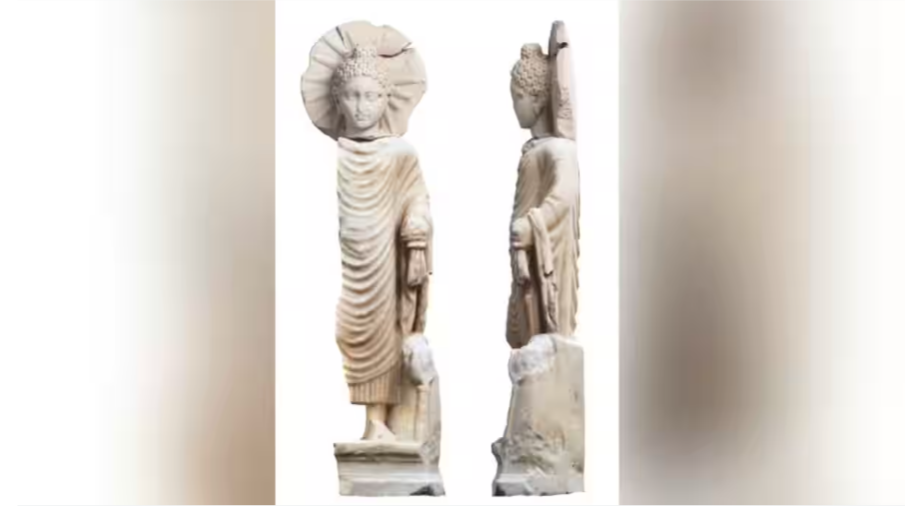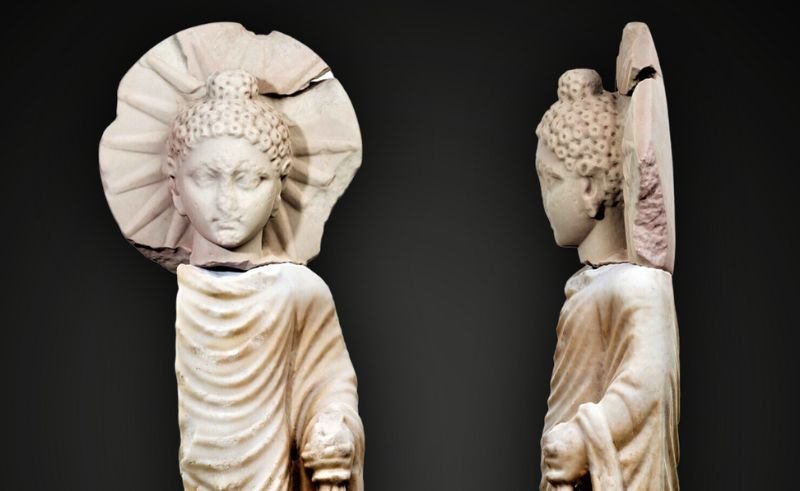The joint Polish-American archaeological mission, working in the temple of the ancient city of Berenike on the coast of the Red Sea in Egypt, discovered a Buddha statue from the Roman era.
Archaeologists believe that a 1,900-year-old Buddha statue that was found at the ancient Egyptian port city of Berenike on the Red Sea coast belonged to a South Asian immigrant.
Siddhartha Gautama, who lived in South Asia about 2,550 years ago, is shown in the Buddha statue. The Buddha, a term borrowed from Sanskrit and meaning "the enlightened one," according to Buddhist legend, was formerly a prince who later gave up his material wealth and sought enlightenment. He started a new religion, which spread over time.
According to Steven Sidebotham, a history professor at the University of Delaware and co-director of the Berenike Project, the newly discovered monument was created between the years A.D. 90 and 140.
The 71-centimeter-tall (28-inch) statue depicts the Buddha standing and holding a portion of his robes in his left hand, according to a statement from the Egyptian Ministry of Tourism and Antiquities (opens in a new tab). Behind him, sunlight is depicted radiating downward from a halo. The ministry reported that, in addition to the statue, a different Sanskrit inscription was discovered at Berenike.
The statue originates from a time when Egypt was governed by the Roman Empire. According to the ministry, there was a lot of trade between Egypt and India at that time, and ships from India would carry goods like textiles, ivory, and pepper, among other things, to Egypt.
According to Sidebotham, it's probable that residents of Berenike who are from South Asia created the Buddha statue locally. While broken, the Sanskrit inscription looks to be some sort of dedication and dates to the period of the Roman emperor Marcus Julius Philippus, who ruled from A.D. 244 to 249, according to Sidebotham.
He emphasized that further information would be made available following the publication of Sidebotham and his colleagues' findings from Berenike.
The newly discovered Sanskrit inscription and related discoveries, according to Richard Salomon, professor emeritus of Sanskrit at the University of Washington in Seattle who was not involved in the discovery, "now clearly demonstrate that there was a settled Indian merchant community, rather than just traders passing through."
It was "a really thrilling find," according to Philip Almond (opens in a new tab), an emeritus professor at the University of Queensland in Australia's Institute for Advanced Studies in the Humanities who was not involved in the finding. Almond remarked that there were Indians in Alexandria according to ancient historical documents, and this discovery suggests that some of the Indians who lived in Egypt were Buddhists.
Rodney Ast, a researcher at the University of Heidelberg in Germany, and Olaf Kaper, a professor of Egyptology at Leiden University in the Netherlands, are the two co-directors of the Berenike Project. The Polish Center of Mediterranean Archaeology in Cairo received permission from the Egyptian Supreme Council of Antiquities to carry out the project.









